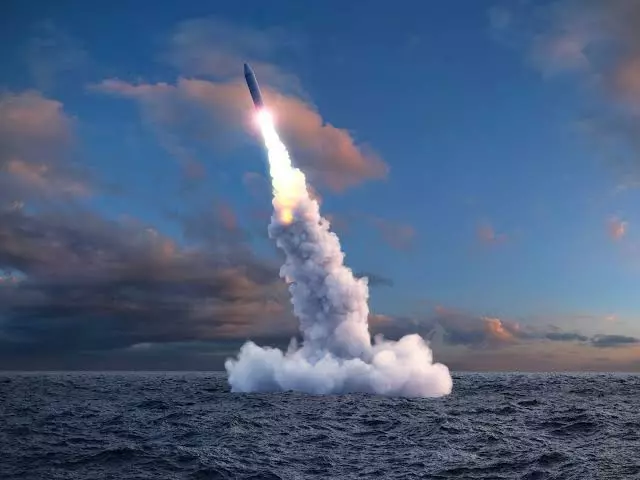

India has sharpened its nuclear deterrent by test firing a SLBM
India on Friday added new teeth to its nuclear deterrent by successfully test- firing a ballistic missile from INS Arihant, the country’s atomic powered submarine.
The Arihant is at the core of India’s nuclear triad, empowering New Delhi to launch atomic weapons from the ground, air and the sea. The Arihant is central to India’s second-strike capability—an ability to potently counterstrike after absorbing a first strike by a hostile force.
India’s land based nuclear deterrent includes land based solid fuelled Agni series of missiles which have a maximum range of around 5000 kilometres, with a footprint that extends deep into China.
Today’s launch precedes the 20th Party Congress in China, which is expected to endorse General Secretary Xi Jinping’s controversial leadership tenure by another five years.
In a statement the defence ministry said: “The missile was tested to a predetermined range and impacted the target area in the Bay of Bengal with very high accuracy. All operational and technological parameters of the weapon system have been validated.”
The successful user trial of the SLBM signals that the Indian Navy has acquired the training to launch the weapon, which can now become operational.
The Defence Ministry said that the launch proves the crew’s competence to operate Strategic Strike Nuclear Submarines (SSBNs).
“A robust, survivable and assured retaliatory capability is in keeping with India’s policy to have ‘Credible Minimum Deterrence’ that underpins its ‘No First Use’ commitment,” the ministry added, signalling the Arihant’s second-strike capability once armed with Submarine Launch Ballistic Missiles (SLBMs).
India has three types of submarines. The SSBN submarines, apart from being powered by a long endurance nuclear engine, can also fire nuclear warhead ballistic missiles.
The country has four Arihant class SSBNs. Sea trials of INS Arighat began in 2017. The next two submarines, INS Aridhaman and an unnamed vessel are likely to be much larger than Arihant.
India is also developing six nuclear-powered SSNs or submarines that are powered by an atomic engine but deploy only conventional missiles.
The country’s rapidly evolving submarine project includes six Kalvari class French-origin Scorpene submarines which will also be retrofitted with Air Independent Propulsion (AIP), that will enable them to stay beneath the surface for a much longer time. The last two of the boats of this class are likely to be equipped with AIP, and the other four will be subsequently retrofitted with the technology.
AIP technology allows a non-nuclear submarine to operate without access to atmospheric oxygen, greatly enhancing their underwater endurance.
Also Read: Agni P spearheads India’s major naval revamp to deter China
The Russian military has carried out a series of strikes on Ukrainian military-related targets in…
India's toy industry, once heavily dependent on imports, is now manufacturing domestically and exporting to…
Members of the Indian diaspora and several artists in Argentina welcomed Prime Minister Narendra Modi…
Sub Lieutenant Astha Poonia officially became the first woman to be streamed into the fighter…
As Israel awaits Hamas's response on Friday to the latest proposal for a hostage release…
Deputy Chief of Army Staff (Capability Development and Sustenance), Lieutenant General Rahul R Singh, on…